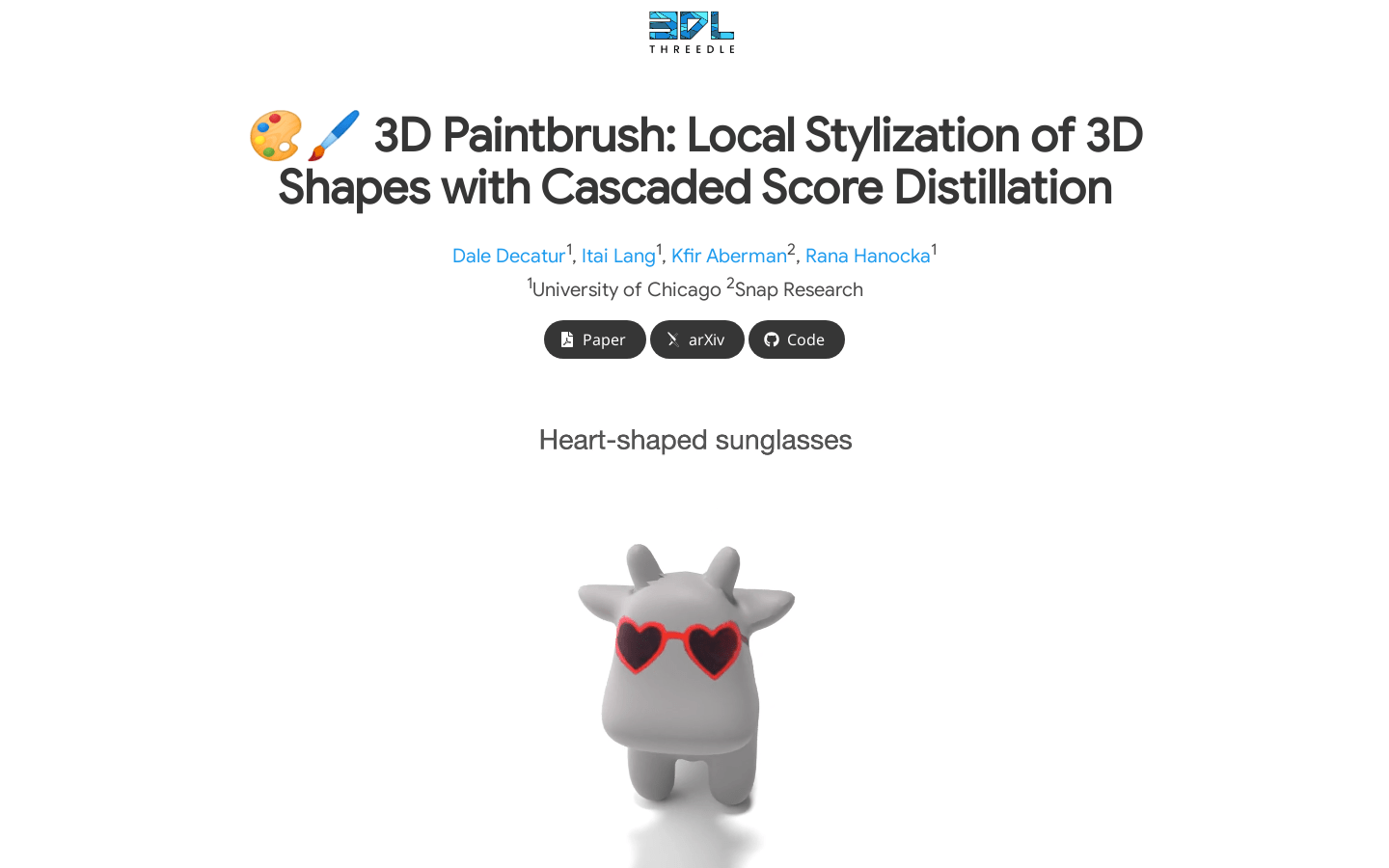










3D Paintbrush
Overview The 3D Paintbrush...
Tags:AI image generation3D AI 3D Tools AI image generation Cascading Diffusion Model Local Editing Open Source Standard Picks TextureOverview
The 3D Paintbrush technique represents an innovative approach to texture application in 3D modeling. This method leverages textual descriptions to automatically apply textures to specific semantic regions on a mesh surface. Unlike traditional methods, it operates directly on the mesh geometry to produce seamless texture maps that can be easily integrated into standard graphics rendering pipelines.
The system is designed to generate both localized texture maps for specified editing areas and corresponding textures tailored to those regions. To achieve this, we employ a multi-stage cascading diffusion model that provides detailed supervision for local editing operations. This approach enhances the detail level and resolution of texture areas through iterative refinement processes.
A key component of this technology is the Cascading Score Distillation (CSD) framework. CSD enables the systematic distillation of scores across multiple resolutions in a hierarchical manner, offering precise control over the granularity of supervision while maintaining global context awareness. This unique combination allows for highly customized and accurate texture application across various 3D shapes and semantic regions.
Target Users
The primary users of this technology are professionals who need to apply textures with precision to specific localized areas on a mesh. This includes:
– 3D artists and designers
– Game developers
– Architectural modelers
– Industrial design professionals
These users will benefit from the system’s ability to automate texture generation while maintaining full control over the editing process.
Use Cases
The 3D Paintbrush technique finds application in several key areas:
1. Personalized Texture Application: Users can apply custom textures to specific regions of 3D models, enabling unique visual designs.
2. Game Design: Adds high-detail textures to game characters and environments for more immersive experiences.
3. Architectural Decoration: Allows precise application of decorative textures to specific areas in architectural designs.
Features
The system offers several distinctive features:
1. Automatic Texture Generation: Generates locally stylized textures based on input descriptions without manual intervention.
2. Localized Control: Creates both localized texture maps and corresponding textures tailored to specific editing regions.
3. Diffusion Model Supervision: Uses cascading diffusion models for detailed local supervision, ensuring high-quality texture outputs.
This technology represents a significant advancement in 3D texture application, offering unparalleled precision and customization capabilities.























